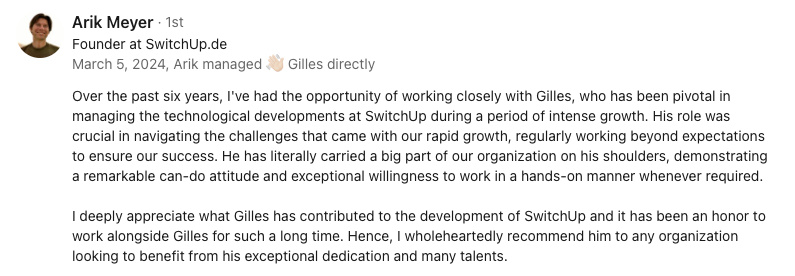Abstract:
This article provides a guide for Chief Technology Officers (CTOs) on quantum computing, highlighting its potential but also the challenges of adoption, integration, and implementation. It emphasizes the revolutionary nature of quantum computing, its potential benefits in various fields, and the significant barriers to widespread adoption, including complex algorithms, a lack of skilled workforce, and practical use cases. The article also addresses the formidable barriers related to the principles of quantum mechanics, error-prone quantum computers, and high costs. It emphasizes the need for investment in quantum-ready infrastructure and collaboration and leadership from technology and engineering directors for successful adoption.
Navigating the Quantum Landscape: A Chief Technology Officer's Guide to Quantum Computing Adoption, Barriers, Integration, and ImplementationThe Quantum Computing Revolution: A Promising New Frontier
As a Chief Technology Officer, I am consistently enthralled by the rapidly evolving field of quantum computing. This technology represents a significant leap forward in processing power, harnessing the principles of quantum mechanics to solve complex problems far beyond the reach of classical computers. While the potential benefits are staggering, there remain significant barriers to the widespread adoption, integration, and implementation of quantum computing in technology and engineering.
Quantum Computing Adoption: Opportunities and Challenges
The allure of quantum computing lies in its potential to revolutionize technology and engineering, offering unparalleled processing power to tackle previously insoluble challenges. Quantum computers promise to propel innovations in various fields, from cryptography and optimization to material science and drug discovery. Despite its promise, the adoption of quantum computing remains in its infancy due to several challenges, including the daunting complexity of quantum algorithms, the lack of a skilled workforce, and the paucity of practical use cases.
Quantum Computing Barriers: A Formidable yet Surmountable Challenge
The path to quantum computing adoption is fraught with barriers. For one, the underlying principles of quantum mechanics are fundamentally different from classical computing, necessitating a radical shift in our understanding and utilization of computing systems. Furthermore, the current generation of quantum computers is prone to errors, requiring sophisticated fault-tolerance techniques to ensure reliable operation. Lastly, the high cost of building and maintaining quantum computers, as well as the dearth of practical use cases, make it challenging for organizations to justify large-scale investments.
Quantum Computing Integration and Implementation: Building a Quantum-Ready Infrastructure
To harness the full potential of quantum computing, organizations must invest not only in the acquisition of quantum hardware but also in the integration and implementation of quantum algorithms within their existing technology and engineering infrastructures. This requires a concerted effort to develop and refine quantum software development kits (SDKs) that enable seamless interaction between classical and quantum computing resources. Moreover, it necessitates the creation of robust, user-friendly platforms that abstract away the complexities of quantum mechanics, empowering developers and engineers to harness the power of quantum computing with minimal expertise in the underlying principles.
Collaboration and Leadership: Directors of Technologies, Directors of Engineering, and Chief Technology Officers
Navigating the quantum landscape requires strong collaboration and leadership from Directors of Technologies, Directors of Engineering, and Chief Technology Officers. By fostering a culture of innovation, encouraging interdisciplinary collaboration, and investing in the development of a skilled workforce, these leaders can pave the way for successful quantum computing adoption, integration, and implementation. In my role as a Chief Technology Officer, I am committed to empowering my team with the knowledge and resources necessary to explore, experiment, and excel in this exciting new frontier.
You might be interested by these articles:
- DLT & Blockchain: Shaping Future Tech Leadership
- Harnessing Distributed Computing Power
- Boosting business performance with edge computing
See also:
- Gilles Crofils: Skills, Industries and Markets
- Micro-Credentials: The Secret Weapon for Startup Success
- Revolutionizing Creativity with Generative AI
- Revolutionizing Daily Life with Smart Devices
- Next-Gen Team Collaboration
- Revolutionizing Safety with Swarm Robotics
- Boost startup agility with R for real-time data processing





